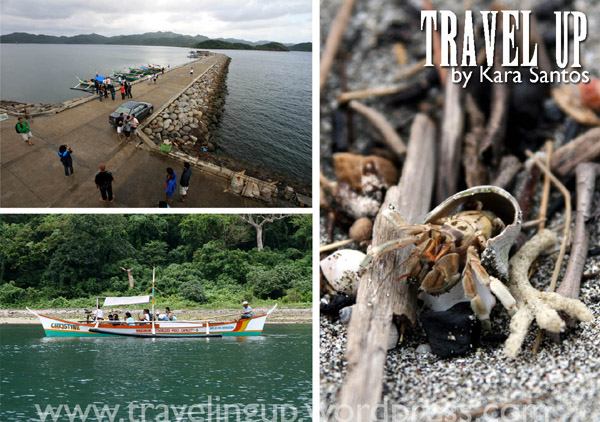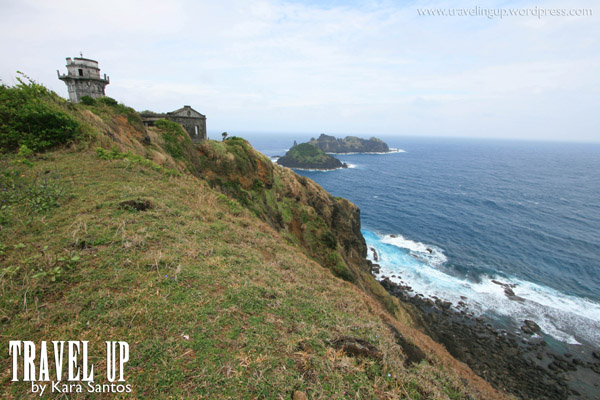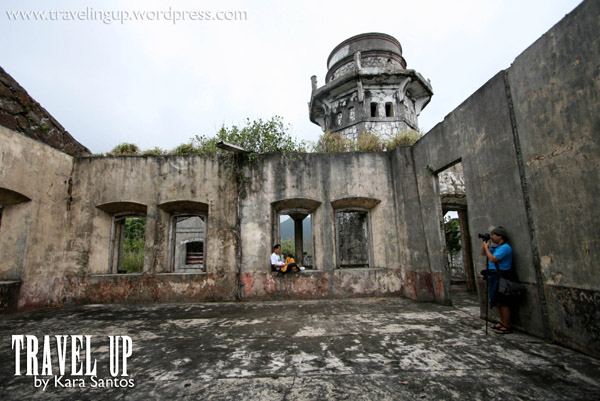Day 2: Island-hopping in Palaui and Cape Engano Lighthouse
On the second day of the Lakbay Norte tour, we headed off to the port of San Vicente in Cagayan where boats were waiting to take us on our island-hopping trip to Palaui.
After a 40- minute boat ride through relatively mild waves, we made it to our first stop at Siwangag Cove, a marine sanctuary in the northwestern part of Palaui island. The rough sandy beach was covered with tiny white corals and hermit crabs.
Then, we boarded the boats again towards another island where Cape Engano, a Spanish lighthouse completed in 1892 stood majestically on top of a hill. This time, the waves were much stronger and the swells made our boats drift almost like a roller-coaster. At times, we lost sight of the boats in front of us.
The sand on the beach in Palaui sunk easily making it a little hard to walk on the shore. The sky during the boat ride had been mostly gloomy but thankfully, as we climbed the hill towards the lighthouse, the weather cleared up a bit, giving us a great panoramic view of the island. An almost golf-course like plain separated the calm cove where our boats had docked and a rocky shoreline facing the Pacific Ocean on the other side of the island being battered by rough waves. I lost count of the concrete steps going up the hill, stopping to catch my breath a few times, and admire the great scenery. Overall, the trek was manageable. It took about 20-30 mins to reach the lighthouse.
After taking a wrong turn on the path going up the hill, I ended up on a cliff where the lighthouse was partly visible facing the rocky shore and the Dos Hermanas islands – two small islets on the East side.
After going back to the main path, I got to the main entrance of Cape Engano and saw the lighthouse up close. Though the stone structure was not as well-maintained as some other lighthouses I have seen, the ruin-like vibe with tree roots growing on concrete walls and branches peeking from the wall’s pillars added character to the place. An area near the tower that seemed to house old ovens were also in a bad state of disrepair. A small rusty metal stairway led up to the top of the lighthouse but we were prevented from going up, lest it collapse.
Despite the lighthouse’s condition, the location and dramatic seascape alone, textured stone walls, doorways and wide windows could make a great spot for pre-nup or fashion editorial photos. One thing that annoyed me was seeing the vandalism on the walls. I really hate tourists who feel the need to scrawl their names everywhere they go instead of preserving the historical or natural beauty of a place.
After a while, the rain started again and we all huddled under the lighthouse, wondering if the weather would cause the waves going back to be choppier than ever. It did.
It would have been great to see the other places listed in the itinerary, namely Anguib Cove, which was described to have fine golden to white sands, pristine waters and lush rolling hills teeming with wild life. From Cape Engano, the cove could actually be reached by boat or land. Tourism staff told us that backpackers often pitched tents and spentthe night there.
But because of the uncooperative weather, we decided to skip going there. Back on dry land around 45-minutes later, we got to the pier for where trays of rice, adobo, beefsteak, and veggies were waiting for us. After the hike and exposure to all that sea air (which really seems to affect one’s appetite), it was no surprise that the food was finished in no time.
Shortly after lunch, we checked into the next hotel in our tour to freshen up and rest. The weather being as it was, most of us slept the afternoon away.
Next up: Eastern Hawaii Hotel in Cagayan









One thought on “Island-hopping in Palaui and Cape Engano Lighthouse”